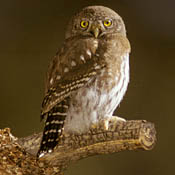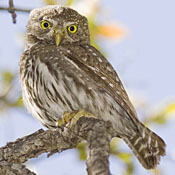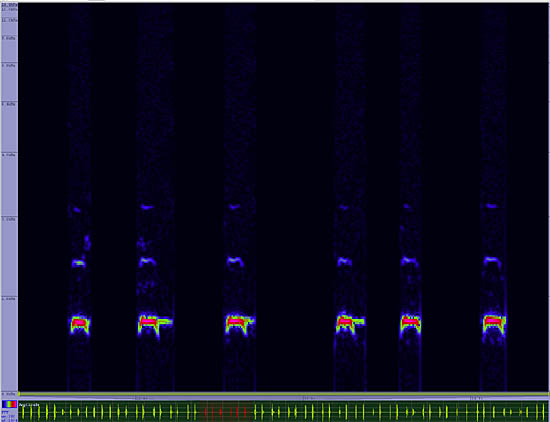Northern Pygmy-Owl
Glaucidium gnoma

Owls

Length: 7 in. (17 cm )
Active day and night in dense coniferous and broad-leafed forests, this small owl preys on rodents, small birds and sometimes insects. It often sits on exposed branches and snags and attracts mobs of small birds that hassle it continually during the day. The nest cavity is high in a tree, and adults often rest in the cavity as well.
The four-digit banding code is NOPO.
Bibliographic details:
- Article: Northern Pygmy-Owl
- Author(s): Dr. Biology
- Publisher: Arizona State University School of Life Sciences Ask A Biologist
- Site name: ASU - Ask A Biologist
- Date published:
- Date accessed:
- Link: https://askabiologist.asu.edu/activities/bird/northern-pygmy-owl
APA Style
Dr. Biology. (). Northern Pygmy-Owl. ASU - Ask A Biologist. Retrieved from https://askabiologist.asu.edu/activities/bird/northern-pygmy-owl
Chicago Manual of Style
Dr. Biology. "Northern Pygmy-Owl". ASU - Ask A Biologist. . https://askabiologist.asu.edu/activities/bird/northern-pygmy-owl
Dr. Biology. "Northern Pygmy-Owl". ASU - Ask A Biologist. . ASU - Ask A Biologist, Web. https://askabiologist.asu.edu/activities/bird/northern-pygmy-owl
MLA 2017 Style
Be Part of
Ask A Biologist
By volunteering, or simply sending us feedback on the site. Scientists, teachers, writers, illustrators, and translators are all important to the program. If you are interested in helping with the website we have a Volunteers page to get the process started.






